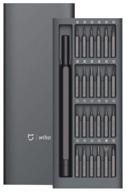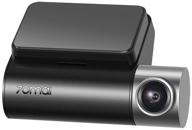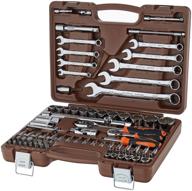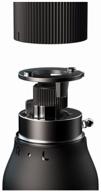
Review on 🔧 Mityvac 7201 Manual Fluid Evacuator Plus with 2.3 Gallon Reservoir: Easy Fluid Evacuation and Dispensing! by Victor Jack

The workhorse of the product!
This tool has been working for me for a year and a half and I use it several times a day. My boss uses the second one we bought and it might be a month newer than mine and he uses it every day too. These two we use to remove oil from the crankcase of all generator sizes from 8kW to 250kW units. I have just ordered another one that I will be using to put fresh oil back into the alternators after pumping out the old oil so only fresh oil is included here. We used an electric pump and a large 5 gallon tank to pump out the oil. when I joined the company. I used this method for a short time and it was cumbersome and messy. Driving the electric pump was sometimes not possible and we have resorted to gravity on these devices which is time consuming and you risk overfilling the small pan if not emptied before filling. There had to be a better way so I researched online and settled on this product. I am now very practiced in the application and the main reasons for further use are time savings, order in the workplace and easy handling. order. Generators, unlike cars, are stationary machines, so our customers can't drive them to the shop for us to work on. We need to get to where they are and when we get there we need to take our tools and equipment to where the generator is located on the customer's premises, which can be far from the service vehicle, sometimes on the roof of large buildings. This thing is a lot easier to manage compared to a pump and a 5 gallon jug. The photo in my post shows a setup I made to connect to almost any oil drain port and it is currently connected to a 10kW Kohler water cooled alternator. The last time I serviced this generator I had to disconnect the hose from the fitting I am now connected to inside the generator and connect it to the barb fitting at the end of my hose. The hose barb and ball valve are still at the end of the hose but are now connected to the adapter shown. Turns out Kohler uses this oil drain method on many of their all-metal generators. When my adapter is not plugged in, there is a standard auto drain plug that plugs this port. Nobody in the company used the port. They loosened the clamp on the inside of the case, pulled out the hose, which required considerable force, and then used the hose to drain. Through the port is much easier. This 10kW unit shown in the photo is really limited by the space inside the case and you need to be an acrobat to get to the hose clamp and loosen it and then remove the stubborn hose from the barbed fitting. what time was it I included this description in my review as many people tend to use the product as it is supplied. The fitting in the picture fits into the car's drain hole. There is a whole range of such screw connections for almost every oil drain hole in the oil pan. Also note that this fitting has a ball valve. It is designed to be inserted into the drain hole on the oil pan and left there for future service. This may be useful information for some users and potential users of this product. Now I come to the durability of the product. The fact that my device was used several times a day for almost two years speaks for itself about the longevity. I've only had one issue with it, which I think is minor, which I solved myself. I noticed a constant stream of air bubbles in the drain hose during use which did not remove the oil but drained it into a waste oil container. This confused me for a while, but I suspected something in the tank was leaking pressurized air over the oil and getting into the outlet tube. When I disassembled the top of the unit I found that the tube that the oil enters and exits through is a loose pressure fitting that simply fits into a hole in the top of the reservoir. I removed the hose, added 4-5 layers of teflon tape and then reinserted the hose into the hole and reassembled the top of the unit. No more air bubble problems. By the way, this will reduce the efficiency of your work when emptying the tank if part of the pressure is released when emptying the tank. Does the fitting have to be tight ex works? Absolutely! But you have to deal with what you get and I had no intention of sending it back because of this small problem. Both of our units did this and I expect the one I just bought will do the same, unless the factory eventually finds out that the pressure fitting inside the unit is too loose. After all, I really enjoy my work. I retired after 35 years of teaching a professional training program in computer repair and networking. Being away from home every day and solving problems are very pleasant aspects of my job. This also includes solving problems with my hardware. I have nothing but good things to say about this pump. It is excellent. If my original breaks, it owes me nothing and will be replaced immediately. If this were to happen, my clean oil block would be immediately replaced with my dirty oil consumption block, and then the new block would be used with clean oil once it arrived. I try to anticipate problems. That's one of the things my boss likes about me. When he hired me, he fired three more. So get to work with this workhorse!
- Easy to use
- Definitely a bad product
New products
Comments (0)
Top products in 🚪 Garage & Shop

MUSTART Level 2 EV Charger With WiFi, 16/25/32 Amp Smart Electric Vehicle ETL Certified Indoor/Outdoor NEMA 6-50P 25Ft Cable

30 Review
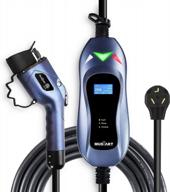
Efficient And Convenient EV Charging With MUSTART Level 2 Portable Charger (240V, 25Ft Cable, 25Amp)

18 Review
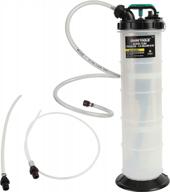
OEMTOOLS 24397 2.5 Gallon Manual Fluid Extractor Pump For Oil And Transmissions, With Oversized Handle For Easier Use And Extraction

23 Review
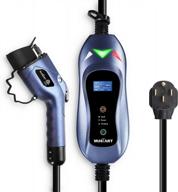
MUSTART Level 2 EV Charger With 240V, 25Ft Cable, And Adjustable Amps (16/25/32) – Portable Electric Vehicle Charging Station With Delay Function And NEMA 14-50P Plug-In

29 Review


